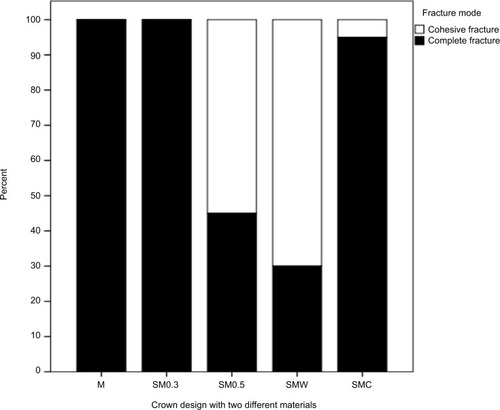Figures & data
Figure 1 Illustrations showing dimensions of the crown designs.
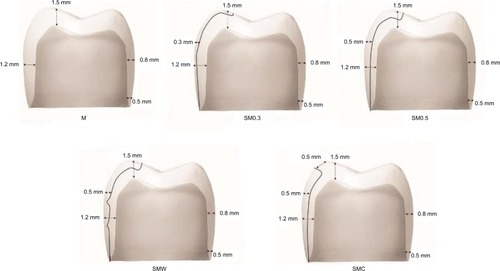
Figure 2 Different crown designs shown: (A) in the CAD software and (B) after milling and sintering.
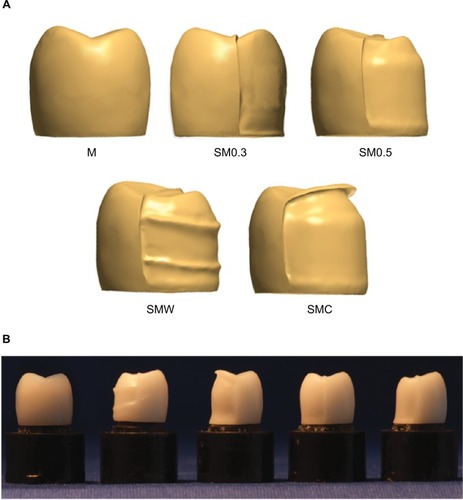
Figure 3 Porcelain build-up step.
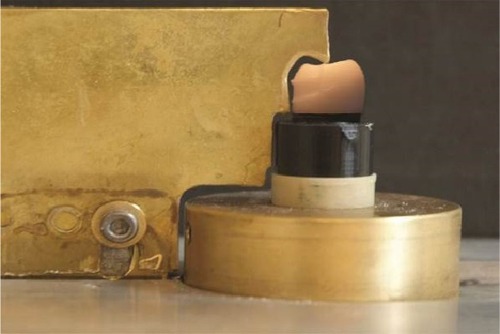
Figure 4 Test set-ups used for: (A) cyclic preload and (B) load to fracture.
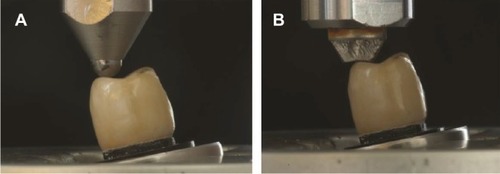
Figure 5 Comparison of mean fracture load (Newton) among the crown designs with two different materials.
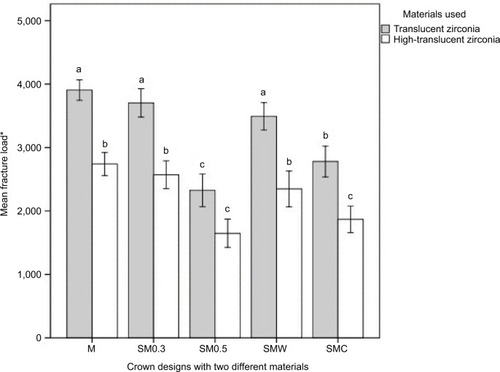
Figure 6 Fracture modes of the crowns: (A) complete fracture in M, SM0.3, and SMC groups and (B) cohesive veneer fracture in SMW and SM0.5 groups.
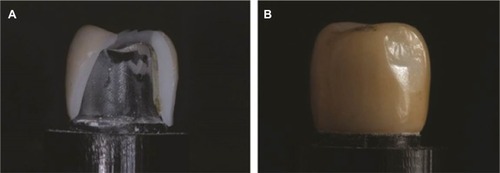
Figure 7 Comparison of fracture mode among the crown designs with two different materials.
